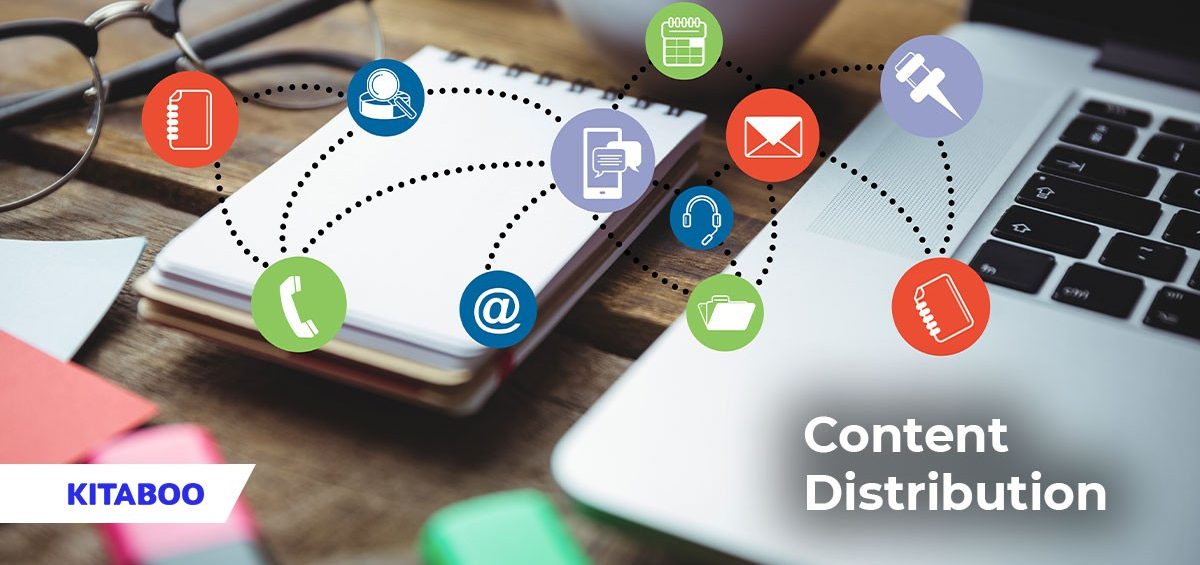As someone in the field of education, it’s possible you’ve kept your business away from digital marketing as much as possible. The traditional belief is that there should be no need to market a service that everyone wants and benefits from. And while there is nothing wrong with this belief, the truth is that times have changed.
Today, it is not only imperative for educational institutions to jump on the marketing bandwagon, it’s also become crucial for content creators (whether they are educators or publishers) to market educational content. Without a consolidated marketing effort, your content may get lost in a sea of competition.
In this guide, we’ll take you through the basics of creating a successful digital content distribution strategy for education. By the end of this, you should not only be able to start distributing your content, hopefully your current and prospective learners will have easier access to it.
Table of Contents:
- Understanding Digital Content Distribution
- Top 7 Tips for a Successful Digital Content Distribution Strategy
- Define Your Objectives
- Identify Your Audience
- Choose the Right Content Format
- Leverage Social Media and Other Online Platforms
- Consider the Mobile Experience
- Track and Analyze the Results
- Update Your Content Consistently
Understanding Digital Content Distribution
In our context, digital content distribution refers to the process of delivering educational content, such as eBooks, videos, and interactive learning materials, to audiences via online channels. This could include social media, email, websites, mobile apps, and learning management systems (LMS) amongst others.
In order to effectively distribute educational content online one must:
- Create and deliver high-quality content that meets the needs of their audiences
- Select the right platforms to reach the target audience, and
- Consistently analyze the performance of content so as to make data-driven decisions on strategy.
Top 7 Tips for a Successful Digital Content Distribution Strategy
1. Define Your Objectives
Irrespective of who you are (an institution, publisher, content creator etc.), you must clearly define the objectives of your content distribution strategy.
Here are a few questions to ask yourself:
- What do you want to achieve with your distribution strategy? – Do you want more learners? Do you want to spread awareness about a subject? Do you want more institutions signing up with you? And so on.
- Who is your primary target audience?
- Who else can influence your primary audience?
- What kind of material are you hoping to distribute?
- How do you plan to evaluate the success of your digital content distribution strategy?
By answering these questions, you can create a set of specific and measurable objectives that will guide you through your content distribution efforts and help you achieve your goals.
2. Identify Your Audience
When we say identify your audience, what we actually mean is understand them to the best of your abilities. That involves knowing as much about them as possible.
In the education world, there are usually more than one audience group. For example, if college-going students are your primary audience, your secondary audience (who can be quite influential) could be educational institutions.
Your content distribution strategy needs to address the pain points of all your audience segments.
Consider the following questions to better identify any audience segment :
- Does the age range of your content match that of your audience?
- If you are targeting learners, are they beginners or at an advanced level?
- Again if learners, what are the preferred learning styles of your audience? Visual, auditory, or kinesthetic learning?
- What are the demographic characteristics of your audience? This could include factors such as gender, ethnicity, and socio-economic status.
Knowing your audience segments will help you tailor both your content and distribution strategy, ensuring it resonates with them.
3. Choose the Right Content Formats
The beauty of creating educational content, online, is that there is no limit to what you can do with it. If the content you wish to distribute does not exist already, it would help to consider the wide range of formats available.
Here’s a look at a few of them:
- eBooks: eBooks are a great way to deliver in-depth content. They allow for the integration of videos, interactive elements, reference resources and so on.
- Interactive Videos: If not an entire eBook, perhaps your content lends itself better to interactive videos. These enable viewers to interact with the content as the video plays. They can answer questions, choose different paths, or explore additional resources.
- Quizzes and Assessments: These are a great way to get learners and other stakeholders to engage with your content. Quizzes and assessments can also be used to evaluate knowledge, solidify learning, and give immediate feedback.
4. Leverage Social Media and Other Online Platforms
This is where most people involved in education are divided. However, whether we like it or not, there is ample proof that those who leverage online channels to distribute educational content, have done extremely well. More importantly though, those who leverage these platforms, widen their reach drastically.
Here are some tips for leveraging social media and other online platforms:
- Choose the Right Platforms: Choose the online platforms that align with your objectives and are popular amongst your target audience.
For example, Instagram and Snapchat are known to be popular amongst younger audiences, while Facebook and LinkedIn are usually preferred by older audiences.
You might even choose multiple platforms, based on the different audience segments you have.
- Share Your Content Aggressively: Unfortunately, it is no longer enough to just post your content online and hope for the best.
Online educational content needs to be shared aggressively across platforms. It might even help to use paid promotions and targeted advertising to reach specific audiences.
Use Hashtags: The internet is overcrowded. Hashtags help make your content discoverable and increase its reach. Use popular hashtags that match your content and your target audience.
5. Consider the Mobile Experience
Have you noticed how much time you spend on your mobile phone? So, now you can imagine how much time your audiences, irrespective of age, spend on their phones. And if your audience is learners, they’re also likely to be using their phones to consume your content.
Here are some tips for creating a mobile-friendly digital content distribution strategy:
- Consider Mobile-Friendly Content Formats: Certain kinds of content are designed for mobile use as well. Create your content in formats such as eBooks, interactive videos, and podcasts.
- Use Mobile-Specific Features: Mobile-specific features such as push notifications, geolocation, and mobile payments can be used to enhance the mobile experience and engage with your audiences in a more personalized manner.
- Test Your Content on Mobile Devices: Test your digital content on different mobile devices to ensure it is easily accessible and user-friendly. You can also use analytics tools to track the performance of your content on mobile devices and adjust your strategy accordingly.
The content you distribute solely for marketing purposes, and the actual subject-matter content, should both be mobile-friendly.
6. Track and Analyze the Results
Just as learners are subject to examinations, so should your content distribution strategy be. Afterall, wouldn’t you want to know if your strategy is working?
Follow these tips to measure your results:
- Set up Tracking: Almost every tool online, will allow you to track some kind of metrics or the other. Set up these tracking and analytics tools to help measure the performance of your digital content.
Some metrics include tracking the traffic to your post/website, the engagement levels it received, and the number of people who converted into customers.
- Define Key Performance Indicators (KPIs): KPIs are the metrics you decide to focus on to evaluate the success of your digital content distribution strategy.
They could range from metrics such as number of people who shared your content to the revenue a particular piece of content generated.
- Experiment with Different Tactics: In the rapidly evolving digital space, no one-size-fits-all. And this has become a reality in the education space as well.
Experiment with different tactics to see what works best for your audiences. Try out different content formats, platforms, and promotional strategies. Also, be open to changing your digital content distribution strategy fairly often.
7. Update Your Content Consistently
Although the crux of your educational content will not change, some aspects of it will need to be updated on a regular basis. For example, the content used specifically to market your work can be tweaked. Similarly, parts of educational content can be updated in the way it is presented and so on.
These are a few tips to help update your content:
- Keep an Eye on Trends: Keep an eye on industry trends and developments and update your content accordingly. This includes changes in curriculum, emerging technology, and new teaching methodologies.
- Refresh Your Existing Content: Refresh your existing content by adding new examples, case studies, or illustrations. This can help keep your content relevant and engaging for your audiences.
Repurpose Your Content: Repurpose existing content into other formats or for different platforms. For example, you can turn a blog post into a podcast or video or adapt your content for social media.
Conclusion
And with that, you’re well on your way with your educational content distribution strategy. However, if this felt a bit overwhelming, you could always enlist the help of a content creation, publishing and distribution platform like KITABOO.
To know more about how this one-stop-shop can elevate your content distribution strategy, write to us at KITABOO@hurix.com.
Discover How An Ebook Conversion, Publishing & Distribution Platform Can Help You
Kitaboo is a cloud-based content platform to create-publish & securely distribute interactive mobile-ready ebooks.
You May Also Like







